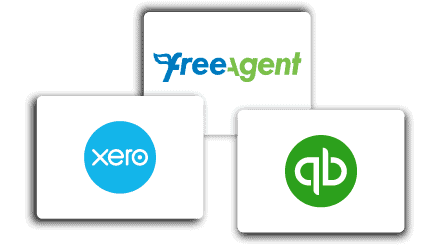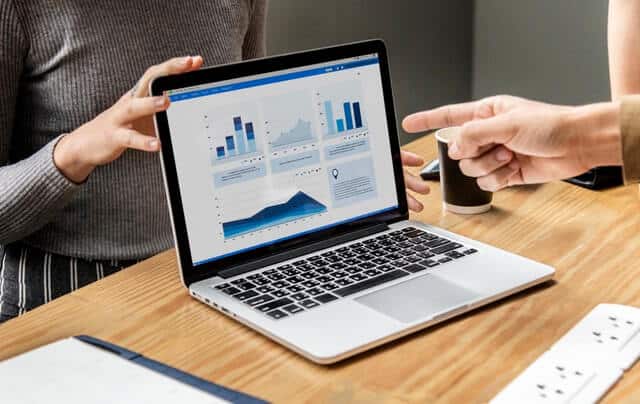By Ashley Preen
February 21, 2019
From April 2019, if your taxable turnover exceeds the VAT threshold of £85,000, you need to keep your VAT business records digitally and submit your VAT return via compatible software. Here at Pearl Accountants, we work with many different systems which are great for making tax digital for VAT. For instance, our MTD accountants work with Xero, Quickbooks, and Sage 200. With our help, you’ll be able to submit records which are compliant with the new MTD rules which are coming into effect this tax year.
Additionally, we should point out that HMRC has confirmed that organisations whose MTD requirements have been deferred to 1 October 2019 don’t need to comply with “digital links” requirements until we get to 1 October 2020, giving them more time to catch up and adapt their systems. As a result, you need to be clear about whether or not your business is deferred until October 2019. If HMRC expects your business to be using this system by April 2019, you could be hit with lofty fines if you miss the deadline. When in doubt, make sure that you check.
The last thing that you want is to be hit with fines for missing deadlines or filing your taxes and VAT incorrectly. This is why we recommend using a reputable small business accountants service in order to make sure that you’re doing everything correctly. Making tax digital for VAT requires you to follow certain procedures and use certain MTD-compliant software which the HMRC has approved for MTD purposes. Pearl Accountants’ VAT specialists can help you to make sure that you do everything correctly and use software such as Xero, Quickbooks, and Sage 200 which complies with the stringent requirements of the making tax digital for VAT system.
So we’ve spent some time talking about making tax digital for VAT and all the deadlines that you have to meet, but what actually is it and why is it coming into effect in the first place? This new system introduced by HMRC means that there will be new digital filing and record-keeping requirements for businesses whose turnover amount requires them to file for VAT. MTD will be compulsory for all entities within the UK who are VAT registered and produce more than £85,000 in taxable turnover every year.
It’s not just local businesses either. Charities will have to find MTD accountants before the deadline, as will businesses which are based in other countries, even if they don’t have an establishment in the UK as such. If you’re not sure about your status and whether you need to fulfill these new requirements set out by HMRC, try speaking to one of our MTD accountants who can provide you with advice for your business. This is especially useful if your business is on the cusp of generating £85,000 in taxable turnover this year – you might need to start making VAT preparations if this is the case.
Under the making tax digital for VAT system, all UK VAT registered businesses will be required to keep digital records and use compatible software (such as Xero, Sage 200, and Quickbooks) to file their VAT tax returns. This is something which is beginning to happen across Europe, with countries from around the world slowly beginning to digitalise the entirety of their tax system. There is currently an international movement to digitalise the tax system and help to make tax reporting more efficient, fast, and transparent throughout the process.

It has been speculated that this is one of HMRC’s first steps toward “real-time filing”. In other words, they seem to be creating a tax system which is quick and effortless, much like the ease of using digital banking on your phone. HMRC’s plans for a real-time tax system are not going to be going away, so you’d best get used to it now. If you’re looking for MTD accountants who can guide you through this transition, the team at Pearl Accountants are very knowledgeable about making tax digital for VAT, and can help you to keep all the digital records that HMRC expects you to keep.
Now, all VAT tax return data must be stored in a digital format on an MTD-compliant system such as Quickbooks or Xero. It must also be “digitally linked”. This means that all of your individual transactions can be traced throughout their financial journey. HMRC will be able to trace transactions from their source data (i.e. your purchase ledger) straight through to your VAT returns when you upload them to the HMRC system. This way, businesses are forced to be more transparent and honest about the source of their income.
We should note at this point that although MTD is going to change the overall process for submitting your VAT returns and keeping your VAT data, it is not going to changes the deadlines associated with VAT, and you will still have to file your VAT returns as often as you did before. The system’s digitalisation will also not change the £85,000 threshold or any other key information regarding VAT – you just need to work with good MTD accountants who can help you to keep digital records and report your digital VAT returns correctly.
According to HMRC, a “digital link” refers to an exchange of data between different software programs. Manual intervention from a human is not necessary for this process – it merely refers to 2 pieces of software “talking” to one another and exchanging data about financial matters. HMRC want to track these digital links so that they can track the lifetime of your business’s financial transactions, ensuring that your VAT is correct and your money is going where it is supposed to go.

For instance, if you own a business which keeps all of its sales and purchase transactions in its own accounting system, which you then transfer to a separate spreadsheet which helps you to calculate your tax and VAT, and then this information is sent to bridging software which, in turn, passes it on to HMRC’s online system… you need these systems to be “digitally linked”. In this example, the three pieces of software need to all be “digitally linked”, meaning that the money can be tracked as it moves around.
When it comes to keeping digital records, there are certain requirements that you need to meet when making tax digital for VAT comes into effect this tax year. If you want to get deep into all the nitty-gritty details from HMRC, you can peruse this very long web page about digital records and MTD. However, for most small businesses, it should be relatively simple to know what to include.
For example, you
must include:
-VAT exclusive value
-Time of supply
-Input tax
-VAT charge rate
If you’re unsure about making tax digital for VAT or you’re not sure exactly what you need to record on your digital records, feel free to speak to one of our talented small business accountants today and see what they can do for you. Here at Pearl, our MTD accountants use software which is compliant with the new making tax digital for VAT rules. Our Xero, Quickbooks, and Sage 200 software integration packages not only make your business more efficient and streamlined, but it also help you to be prepared for these upcoming changes to the VAT system.
Businesses which have to take part in the MTD process will have to create a digital link between the software they use for their VAT return boxes to the bridging software. This bridging software will then need to be digitally linked to the online HMRC system for MTD. Of course, it’s best to start making preparations early, but this comes into force for VAT periods commencing on (or after) 1 April 2019.

Whatever you do, don’t leave it too late and catch yourself rushing for the deadline, like many businesses did when they missed the deadline for GDPR last year and ended up having to close up shop in the EU until they got their new systems in place. The last thing you want is to be investigated by HMRC – it’s a waste of time which could be better spent on adding value to your business, and you could earn yourself a reputation for being unreliable or untrustworthy, which is not a great asset in the business world.
Nonetheless, HMRC understands that businesses with more complicated and intricate setups are going to need preparation and HMRC itself is going to need more time to prepare their own systems for complex businesses. As a result, making tax digital for VAT will be deferred until 1 October 2019 for companies which meet these criteria.
Companies which are exempt until October include unincorporated charities, trusts, local authorities, certain public sector organisations, government departments, NHS trusts, public corporations, and overseas businesses who are registered for VAT in the UK but do not have an establishment on UK soil.
Businesses with certain VAT profiles will also have until October to prepare. This includes businesses which fall under the profile of VAT group registration, divisional VAT registration, those who must make payments on account, and those who use the annual accounting scheme for VAT purposes.
If you’re a small business owner in the UK, you’ve probably received a letter from HMRC recently, reminding you that you need to prepare for the making tax digital for VAT process. You should also have been notified about whether you fall into the April 2019 or October 2019 deadline category as the system rolls out. If you think that your company should fall into the October group, but you have been informed otherwise, we would recommend calling the HMRC VAT helpline and clarifying what is going on. If your business should have a longer deadline in place, then you need to make sure that you’re being granted this deadline.
However, the deadline for digital links is different. Acknowledging that setting up digital links could be a more time-consuming process, the deadline for digital connections is 1 April 2020 for most organisations. By then, they will need to have established digital links between their purchase/sales ledgers, bridging software, and any other financial software which communicates their VAT data. For the businesses mentioned above who get an extension on their making tax digital compliance, the same extension will be granted here. As a result, the businesses listed above will have until 1 October 2020 to establish all the necessary digital links in their systems.
If you’re unsure about whether or not the software you’re using is compliant with the new laws, our MTD accountants here at Pearl can provide you with business and tax advice, as well as set you up with MTD-compliant software such as Xero, Sage 200, and Quickbooks. Get in touch with Pearl Accountants for more information on making tax digital for VAT and other similar enquiries – our small business accountants have the tools, expertise, and software that you need to grow your business legally and sustainably.
The MTD software which gives HMRC the VAT data digitally will not be free to use. This is because it is being developed by third-party development teams on HMRC’s behalf, so they will need to charge you for its use. However, HMRC has made a long list of products available which are within the testing process or which are already successful and available on the market for a modest price. You can find HMRC’s official list of approved VAT software here.

Recently, HMRC widened the software pilot for VAT returns, allowing organisations to begin filing VAT returns under the rules of making tax digital for VAT before the actual April deadline comes into effect. This way, startup businesses can get used to the new system and iron out any flaws in their digital records process. However, the aforementioned businesses which are exempt until October 2019 will not be able to use the pilot program until April 2019.
Making tax digital for VAT is really going to shake things up for startup businesses who are just getting used to the existing VAT system. This new system is introducing new VAT tax return technology over a relatively short period of time, not giving startup businesses which exceed the £85,000 VAT threshold much time to learn and adapt.
Larger businesses with multifaceted and complicated systems will also inevitably struggle to reach compliance by 2020, so they could potentially face fines and penalties. To make matters worse and more complicated, HMRC is busy making changes to their system in anticipation of Brexit as well.
Before anything else, startup businesses should confirm whether they fall into to 1 April 2019 group or the 1 October 2019 group for making tax digital for VAT. HMRC should have sent you a letter which confirms which group you are in, and if you think they are wrong, then you need to get in touch with them immediately.

Next, you should peruse the VAT reporting software available to purchase, deciding which software is best for you. Here at Pearl, we recommend Xero, Sage 200, and Quickbooks for these purposes, and our talented team has extensive experience in using all of these systems. We can confirm that all of these systems are compliant with the MTD rules, helping startup businesses to meet these new requirements quickly and easily.
Then, you should decide whether or not you want to take part in the HMRC MTD pilot before it becomes compulsory. This will give you experience with the system, but bear in mind that once you have signed up for the pilot scheme, you must continue using the system for your VAT returns. In other words, you cannot temporarily go back to using the old system before the real deadline kicks in.
You should assess
your accounting and bookkeeping systems, ensuring that you are able to map out
the VAT trail and see if there are any places where you need to create digital
links between software. If there are gaps in your digital chain will mean that
HMRC cannot review your VAT data, then you’re going to have problems following the
switch to making tax digital for VAT.
Finally, although it goes without saying, you should make sure that your numbers
are all matching up when it comes to your VAT tax returns. Under the new
system, tax mistakes will be much easier to spot, which could result in
penalties and fines if you’re not careful.
A lot of startup businesses are worrying about making tax digital for VAT, but here at Pearl Accountants, our small business